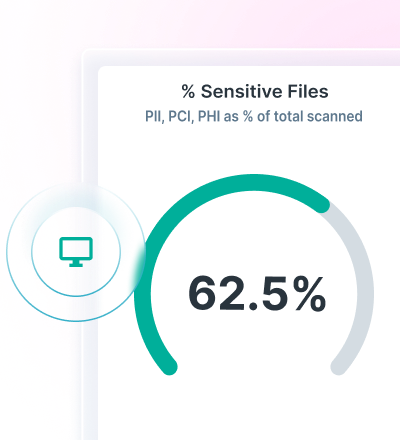
Prevent malware and phishing attacks from reaching users.
Keep your inbox safe from sophisticated email-based threats. Forcepoint Email Security augments the security capabilities of popular email providers such as Microsoft Exchange to detect and block suspicious and risky emails before they have a chance to strike.
Why Choose Forcepoint's Email Security Solution?
Identify and Block Threats
Add an advanced layer of defence to close the critical security gaps created by traditional rule-based filters from popular email clients, which can miss the evolving and sophisticated threats that target systems, sensitive data and user credentials.
Deploy Where You Want
Forcepoint Email Security supports cloud, hybrid or on-premises deployment, enabling organisations to customise protection based on their unique needs and risks.
Real-Time Notification
Users and administrators receive complete visibility into inbound email security events through automatic alerts and detailed reporting.
Stop Phishing and Malware
Review malicious links, suspicious attachments and potential spoofed sender addresses to prevent ransomware, spear-phishing and other advanced threats.
Frequently Asked Questions
What exactly is ‘email security software’ beyond what Microsoft 365/Google already give me?
Email security software are platforms that remove malicious/unwanted email (phishing, BEC, malware, spam) and add controls like DMARC, investigation and remediation. Forcepoint augments native controls with behavioral detection, sandboxing and spoofing protection to stop phishing/malware and can work alongside or replace existing tools.
How does Forcepoint handle phishing, BEC, and zero-day malware specifically?
Forcepoint combines behavioral detection, URL and attachment sandboxing, and spoofing protection to identify and block advanced threats (including zero-day).
Does Forcepoint cover DLP and email encryption approvals?
Yes. Forcepoint’s email security is part of a unified data security platform. You can enforce granular policies on content, attachments, and recipients; apply consistent policies across email, web, cloud apps and endpoints; and use Exchange-native quarantine, encryption and manager-approval workflows. Forcepoint also offers dedicated Email DLP (cloud-hosted, 99.99% uptime) with a large classifier library and approval/encryption workflows.
How does Forcepoint help Singaporean organisations comply with national email security regulations?
Forcepoint’s email security solutions align with Singapore’s Personal Data Protection Act (PDPA) 2012, particularly the Protection Obligation, which mandates safeguarding personal data against unauthorised access or disclosure. Features such as SPF, DKIM, DMARC enforcement and TLS encryption assist organisations in meeting these requirements. Additionally, Forcepoint's real-time threat detection and reporting tools support adherence to the Cybersecurity Act 2018.
How does Forcepoint’s email security software support Singapore’s Smart Nation and regulated industries?
Singapore’s Smart Nation initiative drives digitisation across sectors like finance, healthcare, and government — all with strict cybersecurity requirements. Forcepoint’s email security software offers real-time protection against phishing and malware, backed by AI-driven detection. It integrates easily into regulated environments and supports hybrid deployments common in Singaporean enterprises. With centralised dashboards and detailed analytics, IT leaders can enforce consistent policies, reduce response times and align with the Cybersecurity Act 2018 and MAS TRM Guidelines.
What does admin/user impact look like—alerts, reports, tuning, and ongoing care?
Admins get real-time notifications and detailed reporting; reports can be scheduled and emailed on a cadence.
Do you support TLS and transport security controls we can enforce per connection?
Yes. Forcepoint Email Security can enforce TLS with configurable security levels (e.g., Verify + CN) and encryption strength (128/256 bit), with guidance on testing/validating outbound TLS. If policy requires TLS and it’s unavailable, messages are rejected rather than sent in the clear.











